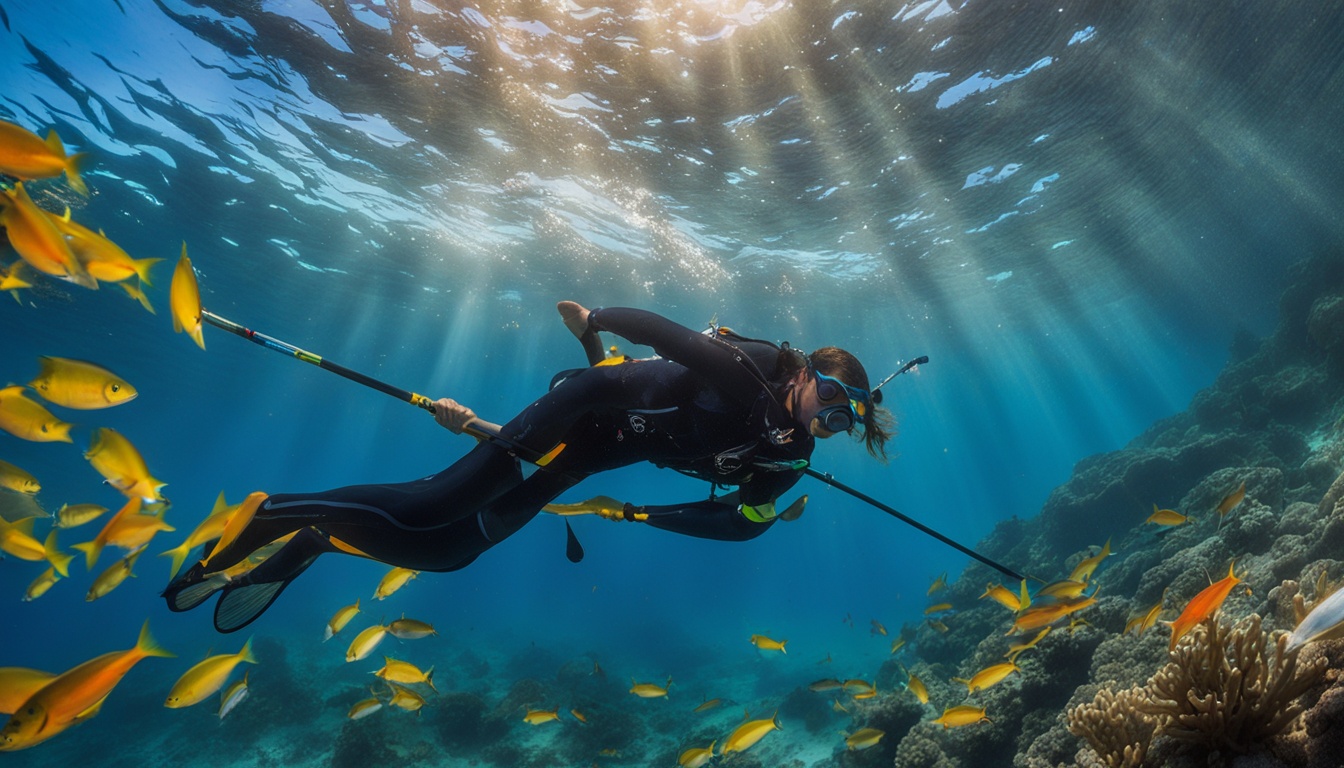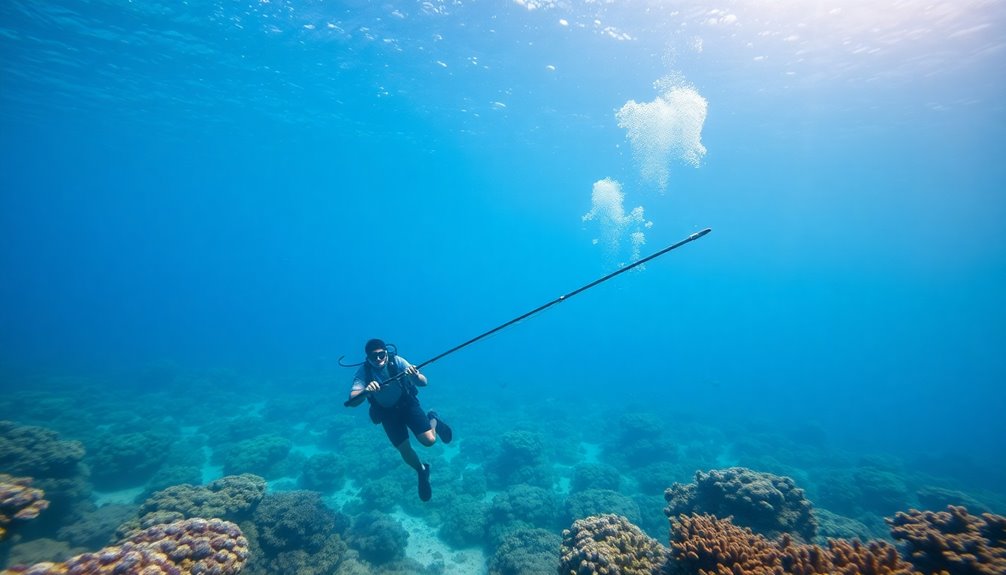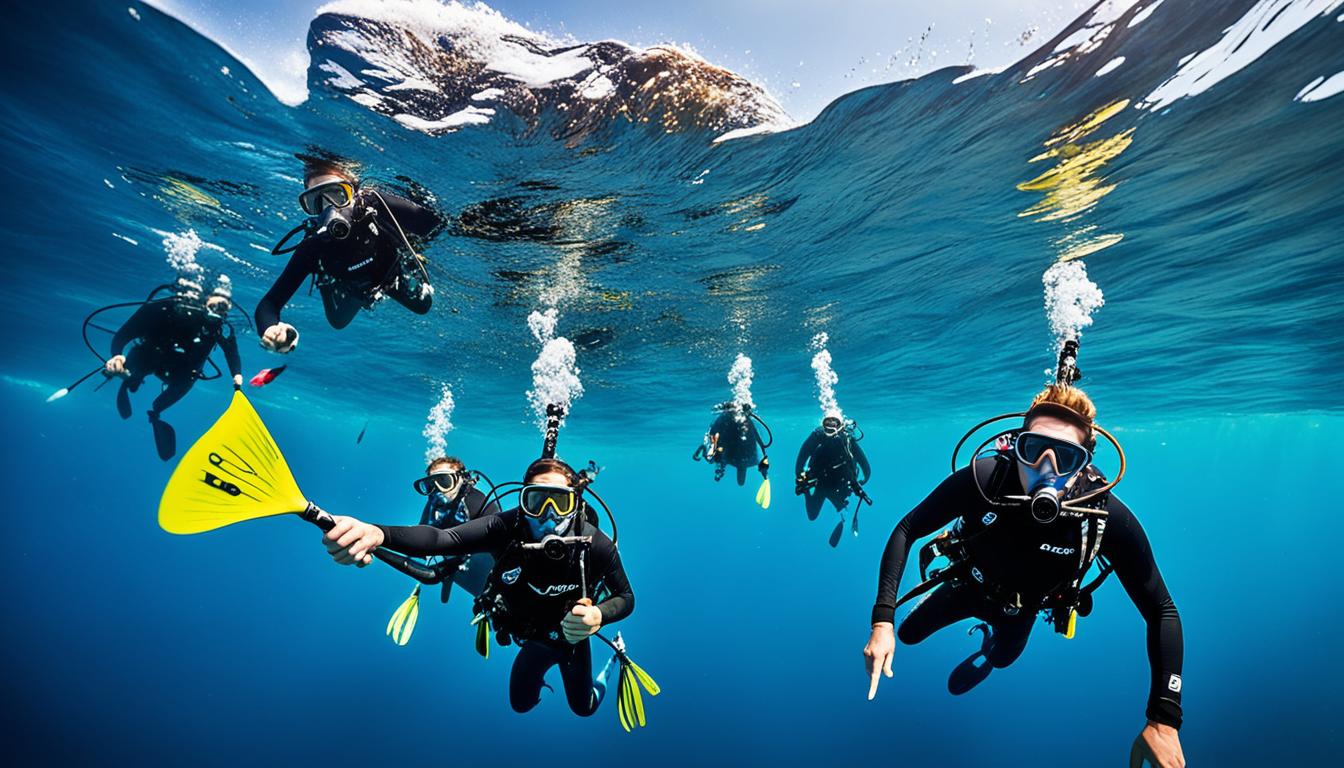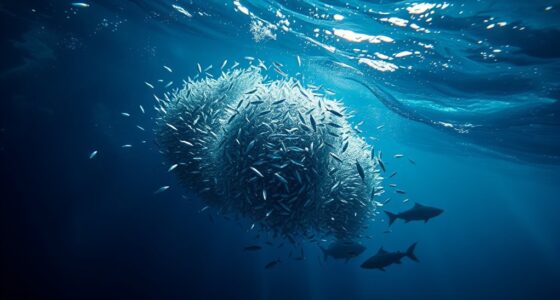Imagine the sun shining brightly above, the clear water gently lapping against your skin as you dive beneath the surface. You feel a rush of excitement as you spot your target – a majestic Blue Groper swimming gracefully in its natural habitat. Spearfishing blue groper is not only a thrilling adventure but also a test of skill and strategy. You steady your aim, ensuring your approach is quiet and careful, knowing that patience is key in this underwater pursuit. One of the essential *blue groper spearfishing tips* is to always respect the fish’s behavior and movements, allowing it to come closer rather than rushing the shot. As you line up the perfect moment, you remember the importance of responsible fishing, ensuring you follow local regulations to protect this incredible species for future generations.
With over 1,500 guides available on the Captain Experiences platform for booking fishing and hunting trips, spearfishing has become increasingly popular among both recreational and experienced spearos. The thrill of the hunt, the adrenaline coursing through your veins, and the satisfaction of a successful catch make it an experience like no other.
Key Takeaways
- Learn essential techniques for spearfishing blue groper
- Choose the right gear and equipment for a successful hunt
- Discover the best spearfishing spots for blue groper hunting
- Ensure safety while spearfishing with expert tips
- Master the art of cleaning, storing, and cooking your catch
In this comprehensive guide, we will provide you with expert tips and techniques to elevate your spearfishing game and increase your chances of a successful blue groper hunt. From understanding the behavior and habitat of blue groper to choosing the right gear and perfecting your spearfishing techniques, we’ve got everything you need to know to make your next spearfishing adventure unforgettable.
Getting to Know Your Blue Groper
Before you embark on your blue groper hunting adventure, it’s essential to understand more about this fascinating fish. Blue groper, also known as grouper, is a diverse group of marine species found around the world. In Australia, the Eastern Blue Groper is endemic and holds great significance as the fish emblem of New South Wales since 1996.
The Eastern Blue Groper is found in coastal marine waters stretching from southern Queensland to Wilson’s Promontory in Victoria. It plays a crucial role in maintaining ecosystem balance by controlling the populations of other marine animals like crabs and sea urchins.
However, due to its susceptibility to overfishing, the Eastern Blue Groper was granted total protection status in New South Wales waters in 1969. This means that spearfishing for blue groper is strictly prohibited in NSW, while angling is allowed with certain bag and size limits. The Florida Fish and Wildlife Conservation Commission has established similar hunting restrictions to ensure the conservation of this beautiful species.
The Western Blue Groper, another species of groper, is listed as Vulnerable by the IUCN. Overexploitation has led to the implementation of fishing restrictions to protect this species, with bag limits and size limits in place. Recreational fishers in Victoria are strictly prohibited from taking or possessing blue gropers, further safeguarding their numbers.
It’s important to stay informed about the hunting regulations set by the Florida Fish and Wildlife Conservation Commission and adhere to them while hunting blue groper. By doing so, you’ll help protect these incredible fish for future generations and contribute to the preservation of our marine ecosystems.
Now that you’re familiar with the basics of blue groper and the restrictions in place, it’s time to dive deeper into the essential gear needed for a successful hunting expedition. In the next section, we’ll explore the must-have equipment that will enhance your blue groper hunting experience.
Essential Spearfishing Gear for Blue Groper Hunting
To increase your chances of a successful blue groper hunt, it is crucial to have the right spearfishing gear. Here are some essential items you need to consider:
Spearfishing Speargun
A powerful speargun is essential for blue groper hunting. Look for a speargun that is capable of delivering enough force to penetrate the tough skin of these formidable fish. Two popular options are the Riffe Marauder 47 Speargun, priced at $1,082.00, and the Rob Allen Tuna Rail Gun, priced at $340.00. These spearguns are known for their reliability and accuracy, making them excellent choices for hunting blue grouper.
Spear Shaft Thickness
When targeting large groupers like the blue groper, it is recommended to use a speargun with a spear shaft that is at least 5/16″ thick. This thickness provides the necessary strength to effectively penetrate and secure your catch. Additionally, a speargun equipped with a double flopper at the end helps prevent the fish from escaping once it has been pierced.
Dyneema Shooting Line
Using a strong and durable shooting line is crucial for blue groper hunting. The JBL Dyneema Shooting Line is highly recommended as it is resistant to cuts caused by rocks and reefs. This line ensures that you have a secure connection between your speargun and your catch, minimizing the risk of losing the fish.
Additional Gear
While the spearfishing speargun, shaft, and shooting line are the key components for blue groper hunting, there are other essential gear items to consider:
- A reliable mask with an airtight seal is necessary for clear vision underwater. Test the mask without the strap to ensure it creates a proper seal.
- Efficient movement through the water is vital, especially during breath-holding dives. Fins help you conserve energy and move efficiently underwater.
- Spearfishing wetsuits vary in thickness depending on water temperature. Choose a wetsuit that provides adequate insulation for the specific diving conditions.
- Weight belts are used to counteract the buoyancy of wetsuits, enabling you to maintain neutral buoyancy while diving.
- Gloves provide grip and protection while handling spearguns and fish.
- A reliable, water-resistant knife is essential for dispatching fish and ensuring your safety during hunting activities.
- Dive computers or watches assist in tracking dive times, depth, and other crucial diving-related data.
By equipping yourself with the right spearfishing gear, including a powerful speargun, a speargun with a thick shaft and double flopper, and a strong shooting line like the JBL Dyneema Shooting Line, you’ll be well-prepared for a successful blue groper hunting adventure.
Techniques for a Successful Hunt
Mastering spearfishing techniques is crucial for a successful hunt. Whether you’re targeting Blue Groper or other species, these techniques will improve your chances of a successful spearfishing outing.
Staying Calm and Patient
When you’re in the water, it’s important to stay calm and avoid sudden movements that may scare away your prey. Being calm and patient allows you to blend into your surroundings and increases your chances of getting close to the fish without alerting them.
Stalking Your Prey
Approach your prey from an angle where they won’t perceive you as a threat. Take your time to carefully study their behavior and movement patterns. Understanding how fish behave will help you anticipate their actions and position yourself for a successful shot.
Aiming with Precision
When you’re ready to take a shot, aim for the vital areas of the fish to ensure a quick and humane kill. Practice your aim regularly to become more accurate and confident in your shots. Remember, a well-placed shot is essential to avoid unnecessary suffering for the fish.
The Buddy System
Spearfishing can be an exhilarating but potentially dangerous activity. Having a buddy or buddies with you is essential for safety purposes. They can assist you in case of an emergency and help ensure that everyone returns safely from the hunting trip.
Spearfishing techniques require practice and experience to master. By staying calm, stalking your prey, aiming accurately, and using the buddy system, you’ll increase your chances of a successful and enjoyable spearfishing adventure.

| Depth of Information | The text provides detailed statistics on fish species suitable for spearfishing, emphasizing the importance of recognizing the fish before targeting them. |
|---|---|
| Mortality Rate | It mentions that there is no catch and release in spearfishing, indicating that if a fish is speared, it is likely to die. |
| Fines | The text warns about heavy fines for shooting protected species, highlighting the legal repercussions in the spearfishing activity. |
| Identification Resources | It suggests using fish identification books and online platforms like inaturalist.org for assistance, stressing the importance of accurate fish identification. |
| Protected Species | The text mentions specific protected species like Blue Groper and outlines the penalties associated with targeting them, underlining the need for species awareness. |
| Sustainable Species | Provides a list of sustainable fish species suitable for beginners, emphasizing the importance of targeting abundant species and transitioning to more challenging ones. |
| Invertebrates | Mentions regulations around catching lobsters and other shellfish by hand, instructing on the appropriate disposal of abalone guts to prevent disease transmission. |
| Target Species Specifics | Offers specific guidance on targeting challenging species such as Australian Salmon, Bonito, and Trevally, including strategies for hunting these particular fish. |
| Conservation Awareness | Raises awareness on sustainable harvesting practices for fish like Black Drummer and Kingfish, considering factors like growth rate and fishing pressure. |
Cleaning and Storing Your Catch
After a thrilling spearfishing adventure and successfully catching a blue groper, it’s time to learn how to clean and store your prized catch. Proper cleaning and storage techniques play a crucial role in preserving the freshness and flavor of the fish.
Firstly, it is essential to have a very sharp knife for filleting the fish. Start by making a precise cut from the pectoral fin down to the pelvic fin, ensuring to remove the fillets carefully. It’s important to note that cleaning techniques may vary depending on the type of fish, so it’s beneficial to familiarize yourself with specific cleaning instructions for different species.
Special Cleaning Instructions for Flounders and Goosefish
Flounders and Goosefish require distinct cleaning techniques that differ from standard fish filleting methods. Pay attention to the following instructions:
- Flounders: Begin by removing the head of the fish, then make a shallow cut along the belly, from the head to the tail. Gently lift the skin and fillet from the backbone, slowly separating it with your knife.
- Goosefish (Monkfish): Due to its unique nature, Goosefish requires special preparations for a palatable outcome. Breading and pan-frying should be avoided as they render the fish inedible. Instead, consider baking, stuffing, or stewing for a delicious result.
Once the fish is properly cleaned and filleted, it’s time to store it for future enjoyment. Vacuum-sealed freezer bags are highly recommended for maximizing shelf life. These bags prevent freezer burn and help maintain the fish’s taste and texture for an extended period. Remember to label each bag with the date of freezing to keep track of freshness.
When using vacuum-sealed freezer bags, it’s crucial to consume the fish within 3 to 8 months for optimal quality. This ensures that the flavors are preserved and the texture remains intact.

By following proper cleaning techniques and storing your catch in vacuum-sealed freezer bags, you can enjoy the taste of freshly caught blue groper even months after your spearfishing adventure. Let’s move on to the next section to discover mouthwatering recipes and cooking methods to bring out the best flavors of your grouper.
Cooking Your Grouper
Cooking your blue groper is a delightful experience that allows you to savor the flavors of this exquisite fish. Whether you prefer simple and classic preparations or want to explore new culinary techniques, there are various ways to cook your grouper that will leave you with a delicious and satisfying meal.
Seasoning Options
When it comes to seasoning your blue groper, you have several options. Seafood seasoning blends are a popular choice, as they enhance the natural flavors of the fish. Alternatively, you can keep it simple and season your grouper with salt and pepper, allowing the freshness of the fish to shine through.
Pan-Seared Grouper
One of the easiest and most flavorful ways to cook your blue groper is through pan-searing. To do this, start by patting the fish dry with a paper towel. Heat a skillet over medium-high heat for three minutes and add olive oil or butter. Carefully place the seasoned grouper fillets in the hot skillet and let them cook for 2-3 minutes per side, or until they turn a golden brown color. The result is a crispy and tender fish with a delightful seared crust.
Remember to adjust the cooking time depending on the thickness of your fillets and the desired level of doneness. Overcooking can make the fish tough and dry. Aim for a firm texture that flakes easily with a fork.
Accompaniments
Now that you’ve cooked your grouper to perfection, it’s time to decide on the perfect accompaniments for your meal. Pair your pan-seared grouper with a refreshing side salad, steamed vegetables, or a bed of fluffy rice. You can also add a squeeze of lemon or a drizzle of tartar sauce to enhance the flavors of the fish.
Cooking your grouper not only provides you with a delicious meal but also allows you to appreciate the natural flavors and textures of this incredible fish. Whether you’re a seasoned chef or just starting your culinary journey, experimenting with different seasonings and cooking methods can help you create simple and unforgettable dishes that showcase the unique qualities of blue grouper.

| Blue Groper Cooking Tips | Specifications |
|---|---|
| Preferred Seasoning | Seafood seasoning blends or salt and pepper |
| Cooking Method | Pan-seared |
| Cooking Time | 2-3 minutes per side |
| Accompaniments | Side salad, steamed vegetables, rice, lemon, tartar sauce |
Spearfishing Techniques for the Bottom
When hunting on the bottom for your desired catch, such as blue groper, employing effective spearing techniques can significantly increase your chances of success. Here are some techniques that can help you attract fish and optimize your catch rate.
Dusting and Scratching
One technique that has proven successful is dusting and scratching the bottom. This involves gently stirring up the sediment on the ocean floor, creating commotion and attracting the attention of nearby fish. The dust and commotion mimic natural prey movement and can lure fish closer, increasing the likelihood of a successful shot.

Hovering Above the Bottom
Another effective technique is to hover slightly above the bottom. Positioning yourself above the ocean floor gives you a strategic vantage point to scan for fish and select your target. This technique allows you to observe the behavior of fish and choose the optimal moment to make your move.
Quietness and Stealth
When spearfishing on the bottom, it is crucial to maintain quietness and avoid sudden movements that may startle the fish. The lateral line on fish, including blue groper, makes them sensitive to disturbances, so minimizing noise and movement is essential to avoid scaring them away.
By employing these spearing techniques, you can enhance your chances of a successful catch while spearfishing on the bottom. Remember to adapt your approach based on the behavior of the fish and the specific conditions of your environment.
Spearfishing Techniques for the Surface
Spearfishing from the surface can be an exciting and rewarding experience, especially for beginners. However, it’s important to note that it may not be the most advanced technique due to the higher chance of fish evasion. Nevertheless, by employing some effective surface spearfishing techniques, you can increase your chances of success.
The Cone of Death
An effective strategy for surface spearfishing is the “Cone of Death” technique. This technique involves partial dives to identify fish within range and wait for the next opportunity. By determining the effective range of your speargun and adjusting your dive accordingly, you can maximize your chances of a successful hunt. It requires careful observation and patience, as you need to accurately assess the distance and trajectory of your target fish.
Calling to Attract Fish
Another technique that can be employed for surface spearfishing is calling. Calling involves making grunting noises underwater to attract fish, notably snapper and grouper. This technique mimics the sounds that these reef fish make and can pique their curiosity, drawing them closer to investigate. Remember, however, that different species respond to different calls, so it’s essential to familiarize yourself with the specific calls that are effective for your target fish.
Targeting Pelagic Species
When targeting pelagic species, such as tuna or mahi-mahi, presentation of food or opportunities for feeding is key. Flashers, which are shiny objects that create reflective flashes underwater, can be used to mimic schooling fish and attract the attention of pelagic species. Chum, a mixture of baitfish and fish oil, can also be used to create a scent trail and entice pelagic species to swim closer to you. By strategically deploying these techniques, you can increase your chances of a successful hunt.
While surface spearfishing may not be as advanced as other techniques, it provides an excellent opportunity to practice your skills and gain experience in the water. Just remember to always be respectful of marine life and abide by local regulations to ensure sustainable and responsible spearfishing practices.

“Spearfishing from the surface can be an exciting and rewarding experience, especially for beginners.”
Strumming Your Bands Technique
When it comes to attracting fish while spearfishing, strumming your bands can be a highly effective technique. By creating noise and vibrations through the strumming motion of your loaded speargun bands or by hitting the speargun with your leg and arm, you can grab the attention of nearby fish and increase your chances of a successful hunt.
However, it’s important to exercise caution when using this technique, as it can also attract other marine creatures, including sharks. While sharks are generally curious by nature, the noise generated by strumming bands can pique their interest and bring them closer to investigate the source of the commotion.
To mitigate any potential risks, it’s essential to be aware of your surroundings and keep a watchful eye on the water. If you spot any signs of shark activity or feel uncomfortable, it’s recommended to relocate to a different area or end your dive altogether.
Remember, strumming your bands is just one of many techniques you can employ while spearfishing. Each location and situation may require different approaches, so it’s essential to adapt your techniques accordingly to maximize your success and ensure your safety in the water.
| Strumming Your Bands Technique | Benefits |
|---|---|
| Creates noise and vibrations | Attracts nearby fish |
| Increases chances of a successful hunt | Demonstrates effective speargun control |
| Can also attract sharks | Requires cautious awareness of surroundings |

By understanding the dynamics of strumming your bands technique, spearfishers can harness its potential to create a noisy underwater environment that appeals to fish. However, it’s vital to strike a balance between making the right amount of noise and ensuring your safety, especially in areas known for shark presence.
As with any spearfishing technique, practice and experience will refine your mastery of strumming your bands, enabling you to become more proficient in attracting fish while maintaining a safe diving environment. Remember, every dive presents a new opportunity to learn and grow as a spearfisher.
Blue Groper Hunting Regulations
When it comes to spearing blue groper, it’s crucial to understand and abide by the fishing regulations in Australia. The Eastern Blue Groper, a species of high importance to the community, has been protected from spearfishing in New South Wales (NSW) since 1969 and from commercial fishing since 1980. Recent rule changes add further measures to safeguard the population of this iconic fish.
Taking Eastern Blue Groper, including line fishing, is strictly prohibited as part of a 12-month trial that began on March 1, 2025. This trial ban applies to all fishing methods and aims to assess the impact of the closure on the species and its habitat. Fisheries are actively engaging with stakeholders and the broader community to receive feedback and develop longer-term fishing rules for Eastern Blue Groper.
It’s essential to comply with these regulations during the trial period, as penalties for contravening the closure and taking Eastern Blue Groper in NSW are severe. A first offense carries a $500 penalty infringement notice and/or a maximum court-imposed fine of $22,000 or imprisonment for 6 months. Second or subsequent offenses may result in penalties of $44,000 or imprisonment for 12 months.
The decision to make the Eastern Blue Groper a ‘no take’ species in NSW aligns with the fishing regulations in Victoria, ensuring protection across the species’ natural range. Notably, this measure aims to foster the recovery of the species, as Eastern Blue Groper exhibit specific biological characteristics that make them prone to overfishing. Being long-lived, slow-growing, and living in small social groups, the recovery of their populations is likely to take multiple decades.

These regulations reflect the commitment of the Australian government and the community to conserve this remarkable species and preserve the social and economic values associated with snorkeling and scuba diving. It is encouraged to support the conservation efforts by respecting the ban on harvesting Eastern Blue Groper and contributing to the ongoing consultation on the trial ban and its longer-term implications.
Translations of the new Eastern Blue Groper fishing rule changes have been made available in Arabic, Korean, Vietnamese, Simplified Chinese, and Traditional Chinese to ensure accessibility and understanding among diverse fishing communities.
| Important Dates | Penalties |
|---|---|
| Public submissions on the rule changes | N/A |
| 12-month trial ban announcement | N/A |
| Ban starts | Mandatory compliance |
| Consultation period closes | N/A |
| Online petition deadline | N/A |
Please note that the consultation on the trial ban closes on April 30, 2025, while the online petition to oppose the ban closes on June 12, 2025. Make your voice heard and contribute to the ongoing dialogue surrounding the protection of the Eastern Blue Groper in Australia.
Conclusion
Summing up, spearfishing blue groper can provide an exciting and rewarding experience for enthusiasts who have the right tips and techniques at their disposal. With a deep understanding of the species, proper gear selection, and mastery of effective hunting techniques, you can embark on a successful hunt.
While spearfishing blue groper is a popular activity, it is essential to prioritize sustainability and selective fishing. Spearfishers advocate for responsible practices that minimize unintentional harm to marine life, aligning with the need for awareness and conservation efforts.
Moreover, ongoing discussions surrounding spearfishing regulations are taking place. With some states prohibiting the spearfishing of blue gropers due to their curious nature, it remains important to stay updated on local policies and comply with any size and catch limits in place.
By promoting increased research, monitoring, and the prohibition of damaging practices such as using Western Blue Groper as bait, we can contribute to the conservation of this magnificent species. Identifying ‘hotspots’ to protect them in marine park sanctuary zones should also be a priority.










